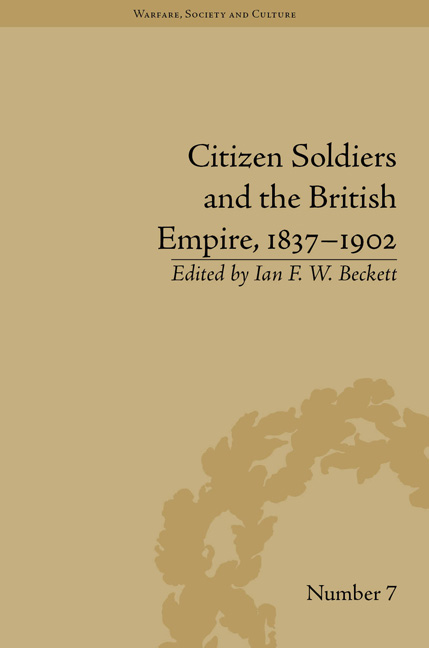1 - Britain
Summary
During the French Revolutionary and Napoleonic Wars (1793–1815), the nature of the ‘amateur military tradition’ in Britain took on new forms. The militia, organized on a systematic basis since the mid-sixteenth century, was supplemented by a revival of the volunteers – first legislated for in 1782 at the close of the American Revolutionary War (1775–83) – and by the first appearance of the mounted volunteers or yeomanry. At the time of the Queen's accession in 1837, however, the militia and volunteers were both in effective abeyance, and the yeomanry had been reduced in strength to just over 19,000 officers and men. That the triumvirate of militia, volunteers and yeomanry in Britain should number over 361,000 in 1903 was testament both to continuing anxieties concerning external and internal threats during the course of her reign but also to the continuing perception of the wider political, social and cultural utility of the auxiliary forces. They provided the essential point of contact between army and society in Britain when the regular army was limited in size and invariably serving overseas. Thus, the militia, yeomanry and volunteers continuously reflected and transmitted attitudes towards military participation. Ultimately, the popular response to the South African War also demonstrated the role of the auxiliaries in the growth of militarism in Victorian Britain.
The militia had been disembodied at the end of the Napoleonic Wars and training suspended, only the permanent staff being retained. A new militia ballot – the force had been liable to conscription since 1757 – was ordered in July 1816 but actual training suspended annually until 1820. Training was then held in both 1821 and 1825. Another ballot was ordered in 1828 but suspended in 1829. In 1830 yet another ballot was ordered in the wake of the domestic reform crisis, and the fall of the French Bourbon monarchy, it being intended to train the force in the summer of 1831. In the event, popular opposition to the ballot brought its suspension in July 1831. The militia also came close to losing its permanent staff altogether in 1834–5.
- Type
- Chapter
- Information
- Citizen Soldiers and the British Empire, 1837–1902 , pp. 23 - 40Publisher: Pickering & ChattoFirst published in: 2014



